The serviced apartment industry is booming, driven by the increasing demand for flexible and cost-effective accommodation options. Whether you’re an established provider or a new entrant, understanding the competitive landscape is crucial for sustainable growth. This blog provides a deep dive into competitor analysis in the serviced apartment market, offering insights into market positioning, pricing strategies, customer preferences, and technological advancements.
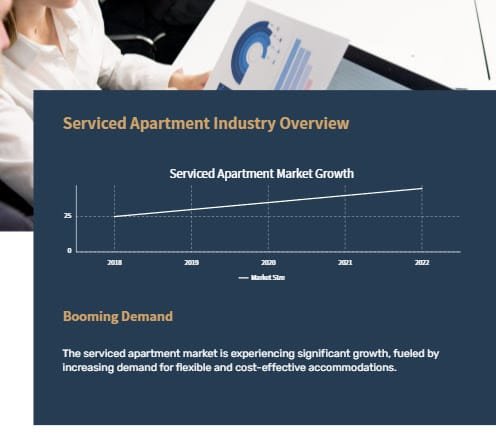
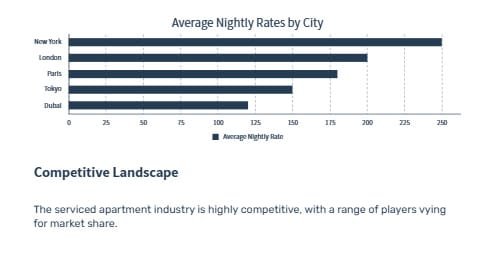
Why Competitor Analysis is Important in the Serviced Apartment Market
Competitor analysis allows businesses to:
-
Identify market trends and gaps.
-
Optimize pricing strategies.
-
Improve service offerings based on industry standards.
-
Enhance customer experience through innovative solutions.
-
Stay ahead of emerging threats and opportunities.
By conducting thorough competitor research, serviced apartment businesses can carve out a niche and strengthen their market presence.
Key Elements of Competitor Analysis in the Serviced Apartment Market
1. Identifying Competitors
Competitors in the serviced apartment sector can be broadly categorized into:
- Direct Competitors: Other serviced apartment providers operating in the same region or targeting the same customer base.
- Indirect Competitors: Hotels, vacation rentals (Airbnb, Vrbo), and extended-stay accommodations.
2. Market Positioning & Branding
Analyzing competitors’ branding and market positioning helps you understand their unique selling points (USPs). Look at their:
- Website and online presence.
- Social media activity.
- Customer reviews and testimonials.
- Brand messaging and value proposition.
3. Pricing Strategies & Revenue Models
Understanding how competitors price their serviced apartments gives you insight into market expectations. Consider:
- Nightly vs. Monthly Rates: How do competitors structure pricing based on duration of stay?
- Discounts & Promotions: Are there seasonal discounts, loyalty programs, or corporate discounts?
- Hidden Charges: Look for additional fees, such as cleaning or service charges.
4. Service Offerings & Amenities
Evaluate the services and amenities competitors provide, including:
- Furnishing quality and style.
- Housekeeping and maintenance services.
- Smart home technology integration.
- Fitness centers, coworking spaces, and entertainment facilities.
5. Customer Experience & Reviews
Competitor Analysis in the Serviced Apartment Market, Analyzing customer feedback can provide valuable insights into strengths and weaknesses. Platforms like TripAdvisor, Google Reviews, and Booking.com offer:
- Customer satisfaction ratings.
- Common complaints and praises.
- Trends in service expectations.
6. Technology & Innovation
Tech-driven enhancements can be a key differentiator. Investigate:
- Mobile check-ins and digital keys.
- AI-driven customer service and chatbots.
- IoT-enabled smart apartments.
- CRM and data analytics for customer insights.
7. Marketing & Lead Generation Strategies
Understanding how competitors attract and retain customers can help refine your marketing approach. Key areas include:
- SEO and content marketing.
- Social media engagement.
- Google Ads and PPC campaigns.
- Influencer collaborations and partnerships.
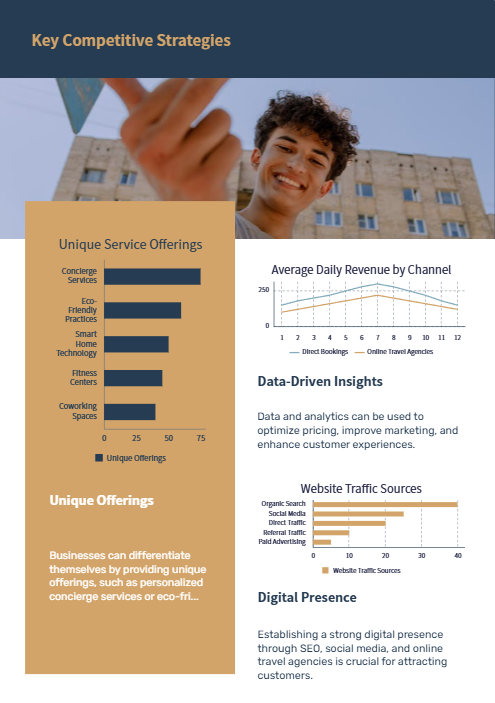
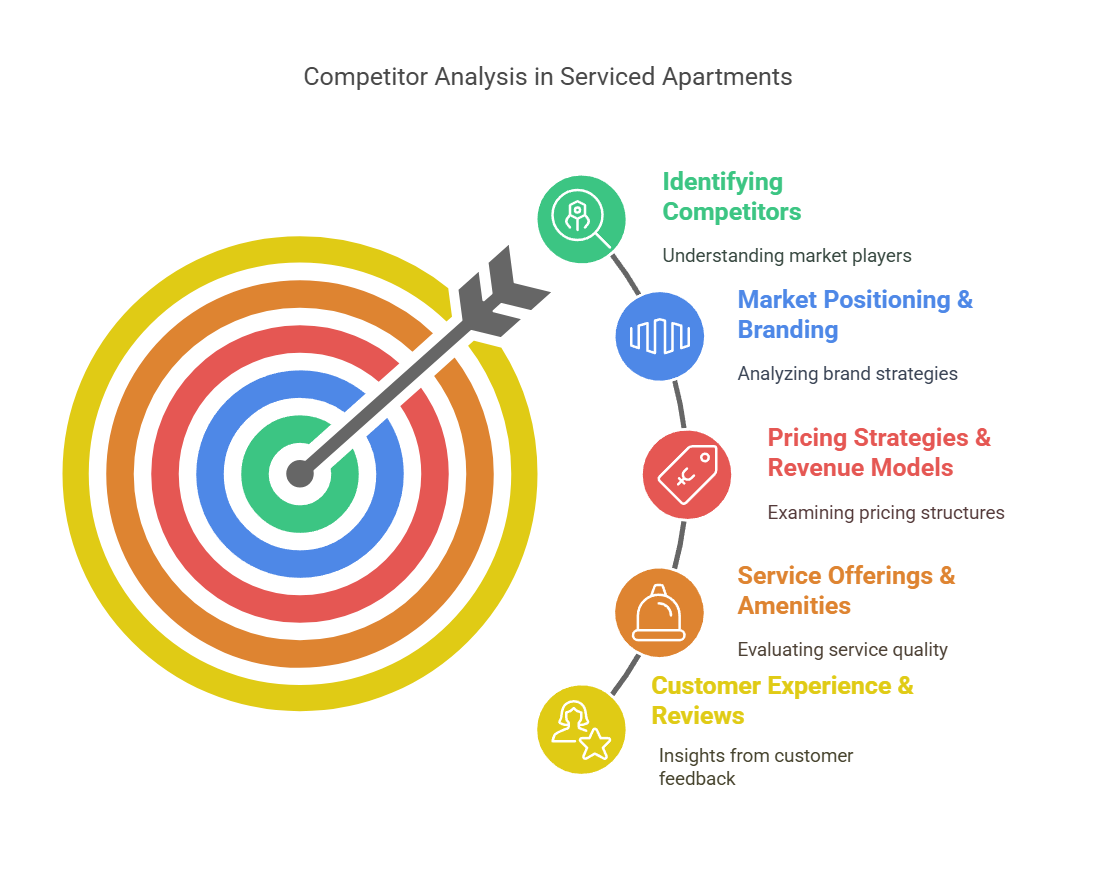
Conducting a T-Shaped Competitive Analysis
The T-Shaped Competitive Analysis Model allows businesses to analyze competitors at both a broad and deep level:
-
Broad-Level Analysis: Compare multiple competitors across general industry trends, pricing, and service offerings.
-
Deep-Level Analysis: Select key competitors and analyze their specific strengths, weaknesses, opportunities, and threats (SWOT Analysis).
Example of a SWOT Analysis for a Serviced Apartment Competitor
| Factor | Description |
|---|---|
| Strengths | Strong brand presence, premium locations, high customer satisfaction. |
| Weaknesses | High pricing compared to competitors, limited budget-friendly options. |
| Opportunities | Expansion into emerging markets, integration of smart home tech. |
| Threats | Growing competition from Airbnb and budget hotels, economic downturn. |
Best Practices for Competitive Strategy in the Serviced Apartment Market
1. Differentiate Through Unique Offerings
- Offer personalized services such as custom concierge solutions.
- Implement eco-friendly practices for sustainability-conscious travelers.
- Create hybrid spaces that cater to both business and leisure travelers.
2. Leverage Data & Analytics
- Use AI-driven pricing models to stay competitive.
- Monitor competitor marketing performance through tools like SEMrush or Ahrefs.
- Track customer sentiment analysis to refine services.
3. Enhance Digital Presence
- Invest in SEO to rank higher in search results.
- Optimize listings on major OTAs (Online Travel Agencies).
- Engage in social media marketing with interactive content.
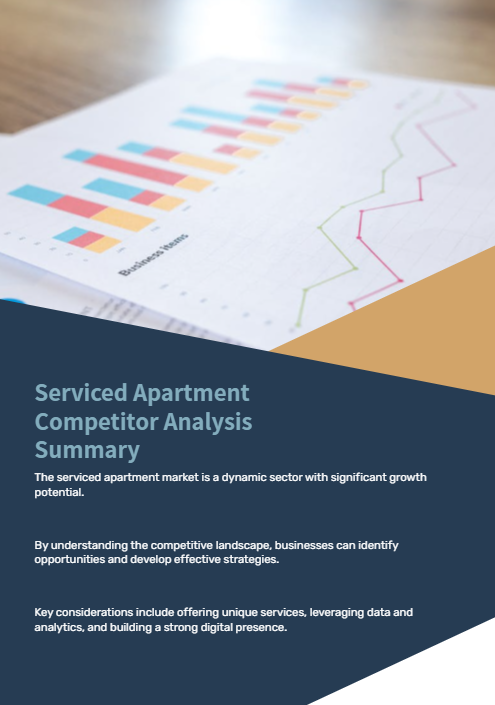
Competitor Analysis in the Serviced Apartment Market, Need help conducting a competitor analysis for your serviced apartment business? Contact us today for expert insights and strategic guidance!


